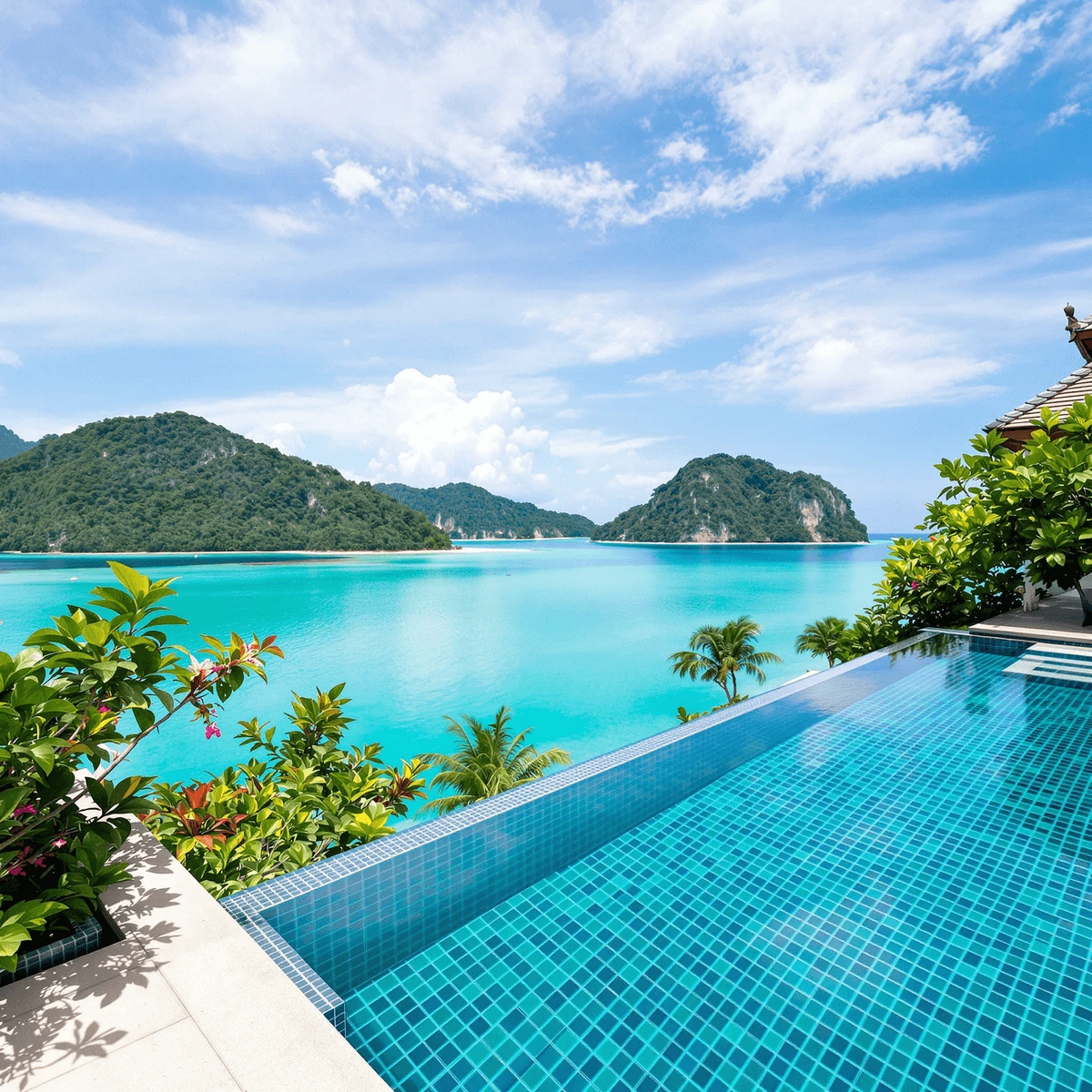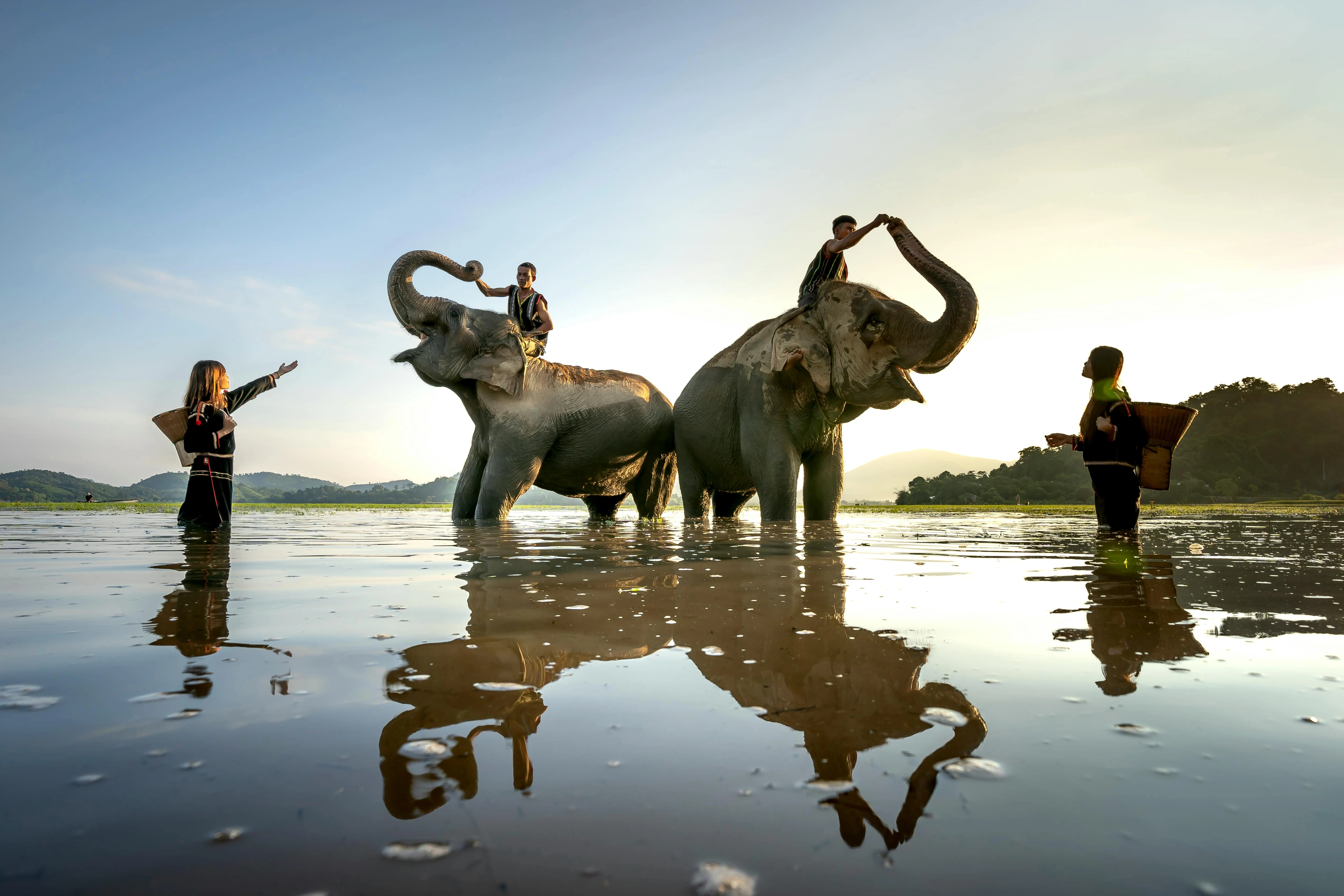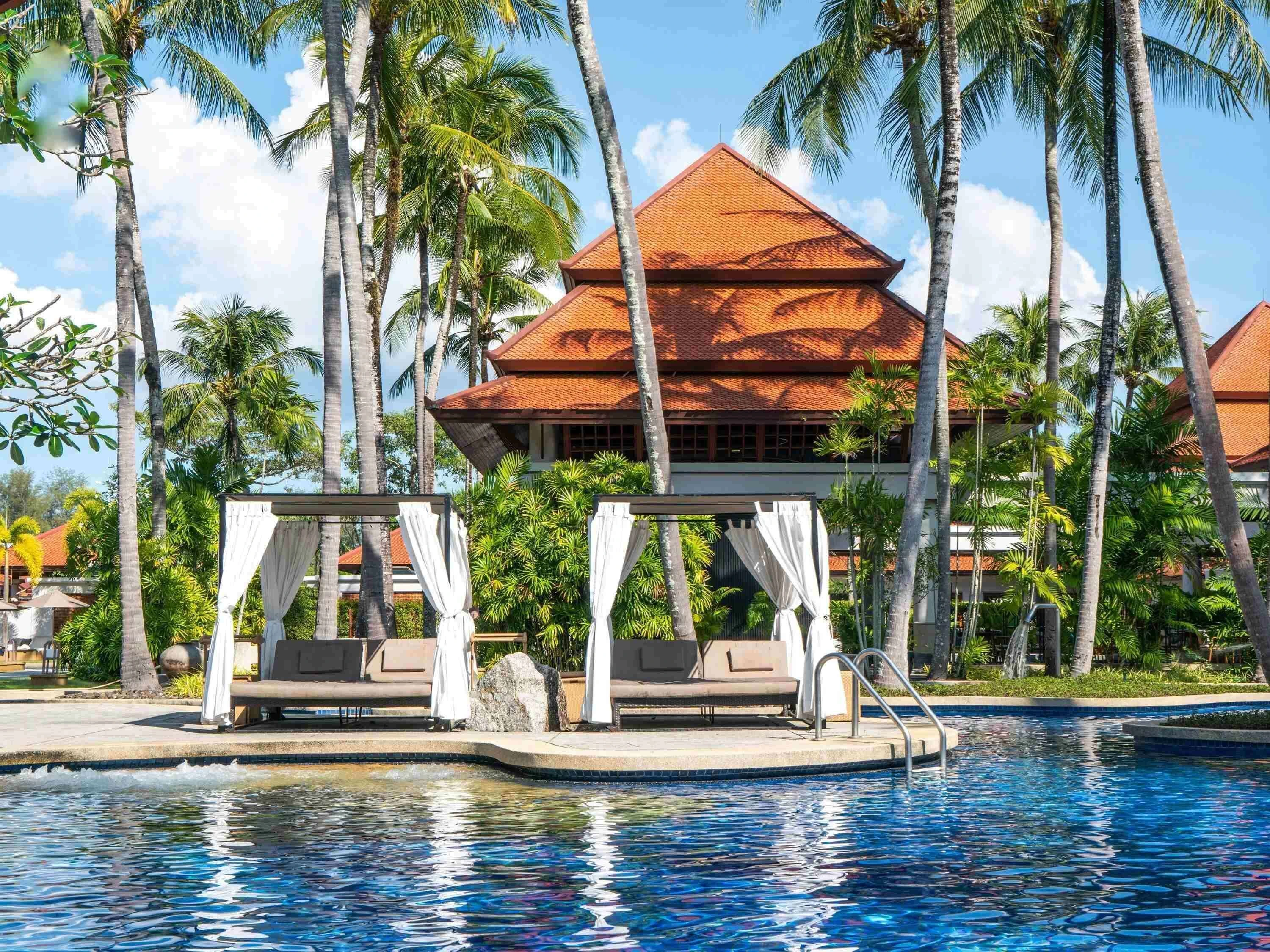Best Luxury Travel Packages to Thailand for 2025
Thailand is a top destination for luxury travel in 2025, offering a unique combination of ancient traditions and modern luxury...
read full blogYour ultimate guide to Thailand’s weather, seasons, and festivals. Discover when to visit for the best beaches, cultural experiences, and budget-friendly trips.
See Quick AnswerWondering when to plan your Thailand getaway? The best time to visit Thailand depends on your travel style. The cool, dry months from November to February bring perfect weather and iconic festivals like Loy Krathong. The March to May hot season is ideal for Songkran and cultural adventures, while the June to October monsoon rewards budget travelers with lush landscapes and lower prices.
The best time to visit Thailand in 2025 is between November and February, when the weather is cool, dry, and perfect for beaches, temples, and festivals.
Quick Tip: For first-time visitors, aim for December or January for the most balanced experience. Budget travelers may prefer September or October for big savings.

Thailand may be small compared to some countries, but its climate patterns vary widely. The north can be cool while the islands are humid, and while Bangkok celebrates a festival in sunshine, Phuket may be dealing with heavy rains. To plan your trip well, you’ll want to look at each region separately — here’s a deep breakdown.
Best Time: October to February
Cool mornings and dry air make this the prime season for trekking,
temple-hopping, and wandering
Chiang Mai’s
famous night bazaars. Festivals like Yi Peng & Loy Krathong in
November (which
Travel + Leisure
calls one of the world’s most magical events) transform the skies with
lanterns. The Chiang Mai Flower Festival in February
is another seasonal highlight.
Avoid: March to May
This is “burning season,” when crop fires cause smoke and haze across
the north. Air quality in Chiang Mai and Chiang Rai can drop sharply.
Other Perks:
Plan your Northern Thailand trip:
Best Time: November to February
Bangkok
and the central plains are hot year-round, but these months bring
cooler evenings and more bearable daytime heat.
This is when temple-hopping, boat rides along the Chao Phraya River,
and rooftop dining in Bangkok are at their best. Nearby
Ayutthaya is also easier to explore in milder weather
— cycling between temple ruins is far more enjoyable when it's not
sweltering.
Hot Season: March to May
Expect sticky afternoons where temperatures soar past 35°C. However,
this is also festival time — April brings Songkran,
Thailand’s nationwide water festival, when Bangkok becomes one giant,
joyful water fight. Travelers who can handle the heat often find this
period culturally rewarding.
Rainy Season: June to October
Daily downpours are common, but they rarely last long. Mornings are
often clear, with showers hitting in late afternoon. This is still a
good time for shopping, spa days, and nightlife since most activities
are indoors.
Traveler’s Note: Bangkok is busy year-round, but hotel prices dip in the rainy season. If you’re flexible and don’t mind an umbrella, this can be a budget-friendly way to experience the city.

Best Time: November to April
The Andaman coast shines during the cool, dry season. Seas are calm,
ferries run smoothly, and beaches like Phuket’s Patong, Krabi’s
Railay, and the Phi Phi Islands look exactly like the postcards.
Snorkeling and diving visibility are excellent, and luxury resorts are
in full swing.
Avoid: May to October
Heavy rains and rough seas can disrupt ferries, though this is also
when luxury hotels slash prices dramatically.
Why Travelers Love It:
Plan your West Coast escape:
Best Time: February to April & July to August
The Gulf of
Thailand
has its own weather rhythm. When the Andaman is wet, Samui and Koh
Phangan are often sunny. These months are the safest bets for calm
seas, white-sand beaches, and great conditions for snorkeling and
diving around Koh Tao.
Avoid: September to December
The monsoon shifts eastward, bringing heavy rains. While the islands
don’t shut down completely, ferry services can be delayed and beaches
less inviting.
Traveler’s Tip:
Other Perks:
Even in the wet season, resorts remain open, and spa culture thrives —
so if your trip is more about rest than adventure, you’ll still find
value.

Not every traveler heads to Thailand for the same reason. Whether you dream of lazy island days, mountain treks, or underwater adventures, the best months to visit depend on your activity of choice. Here’s the breakdown:
If sun-soaked days and turquoise waters are your dream, timing matters.
Plan your island-hopping adventure:
Thailand’s mountains and forests shine in the cool, dry season from November to February. Northern gems like Doi Inthanon and Mae Hong Son offer crisp mornings, clear skies, and waterfalls at full flow.
Plan your trek in Northern Thailand:
Thailand is a diver’s paradise — but seasons differ by coast.
Plan your dive adventure:
Looking for Thailand on a budget? The sweet spot is July–September, when the monsoon keeps tourist numbers low. Hotels slash rates, flights are cheaper, and popular attractions are quieter.
While you’ll get daily showers, they rarely last all day — meaning you can still explore between bursts of rain. Travellers Worldwide points out that savvy backpackers plan trips in these “green season” months for max savings.
Make your budget trip even smarter:
Thailand's calendar is filled with vibrant festivals and cultural celebrations that bring its traditions to life. Planning your trip around one of these events can turn a great holiday into an unforgettable one.
Every April, Thailand transforms into the world’s biggest water fight. Streets in Bangkok, Chiang Mai, and Phuket erupt in celebrations where locals and travelers splash, dance, and party. Beyond the fun, Songkran is also a time of temple visits and family gatherings
Plan your Songkran trip:
In November, the skies and rivers of Thailand light up with floating lanterns and candlelit offerings. The most magical experience is in Chiang Mai, where thousands of lanterns drift into the night sky during Yi Peng.
Krathong is celebrated nationwide, with riverside rituals and family gatherings. More about these festivals can be found on Agoda and Globefiesta.
Plan your lantern festival trip:
This nine-day event, especially vibrant in Phuket and Bangkok’s Chinatown, is a mix of spiritual rituals, colorful parades, and strict vegetarian food offerings. Street stalls line the roads with incredible plant-based dishes, while processions honor the Nine Emperor Gods. Explore more on Shipped Away
Thailand’s cultural depth goes beyond the famous national festivals.
Plan your cultural immersion:

| Month | Major Festivals & Events | Where to Experience Them |
|---|---|---|
| January | Chinese New Year | Bangkok’s Chinatown, Phuket, Koh Samui |
| February | Chiang Mai Flower Festival | Chiang Mai (floats, floral parades) |
| March | Makha Bucha Day (Buddhist holy day) | Temples nationwide |
| April | Songkran (Thai New Year water festival) | Chiang Mai, Bangkok, Phuket, Pattaya |
| May | Rocket Festival (Bun Bang Fai) | Isaan region (Yasothon) |
| June | Phi Ta Khon (Ghost Festival) | Loei Province |
| July | Asalha Puja & Buddhist Lent | Temples across Thailand |
| August | Queen Mother’s Birthday / Mother’s Day | Nationwide |
| September | Vegetarian Festival | Phuket, Bangkok, Krabi |
| October | End of Buddhist Lent | Temples nationwide |
| November | Loy Krathong & Yi Peng Lantern Festival | Chiang Mai, Sukhothai, Bangkok |
| December | Christmas & New Year celebrations | Phuket, Bangkok, Koh Samui, Chiang Mai |
| Region | Cool Season (Nov–Feb) | Hot Season (Mar–May) | Rainy Season (Jun–Oct) |
|---|---|---|---|
|
Northern Thailand (Chiang Mai, Chiang Rai) |
Best for trekking & festivals | Very hot, smoky (burning season) | Occasional heavy rains |
| Central Thailand (Bangkok, Ayutthaya) |
Ideal sightseeing weather | Hot & humid | Afternoon storms, but city life continues |
|
Southern Thailand - West Coast (Phuket, Krabi) |
Calm seas, perfect beaches | Hot but manageable | Heavy monsoon, rough seas |
|
Southern Thailand – East Coast (Koh Samui, Koh Phangan) |
Great conditions (Feb–Apr) | Mixed weather | Heaviest rains Sep–Dec |
| Month | Major Festivals |
|---|---|
| April | Songkran (Thai New Year) |
| November | Loy Krathong & Yi Peng Lanterns |
| September–October | Vegetarian Festival |
| June | Phi Ta Khon (Ghost Festival) |
Pros: Best overall weather, ideal for sightseeing & outdoor activities.
cons: Higher prices, more tourists (peak season).
Pros: Fewer crowds, Songkran Festival in April.
Cons: Very hot, sometimes uncomfortable for city travel.
Pros: Cheapest prices, lush green scenery, fewer tourists.
Cons: Unpredictable storms, some islands inaccessible.
Thailand offers more than just cheap flights — each destination has its own unique experiences. Compare flight prices with Kiwi.com's live widget, and explore our top travel spots below.

Famous for its beaches and nightlife, Phuket also offers island-hopping adventures to Phi Phi and James Bond Island.
Phuket →
Northern Thailand's cultural capital, with mountain treks, elephant sanctuaries, and ancient temples.
view Chiang Mai →
are a top tourist destination in Thailand, known for their stunning natural beauty and activities like swimming, snorkeling, and boat tours.
View Phi Phi Islands →The lowest fares are usually found during the shoulder seasons — May to June and September to October. These months avoid peak tourist crowds and major holiday surcharges, with flights often 20–30% cheaper than December and January.
For the west coast (Phuket, Krabi, Phi Phi), the best time is November to April when seas are calm and skies are sunny. For the Gulf islands (Koh Samui, Koh Phangan), the weather is ideal in January to August.
Book 6–8 weeks in advance for the best prices. For peak travel periods like Christmas, New Year, and Songkran (April), secure tickets at least 2–3 months early as fares rise quickly.
Many full-service and budget carriers connect to Thailand. Popular options include Thai Airways, Singapore Airlines, Emirates, Qatar Airways, AirAsia, and Scoot. For the lowest fares, budget airlines often provide the best deals.
The busiest entry point is Suvarnabhumi Airport (BKK) in Bangkok. Other popular gateways include Don Mueang (DMK) for budget airlines, Phuket International (HKT), and Chiang Mai (CNX).
Yes — Songkran in mid-April is Thailand’s biggest water festival and a cultural highlight. However, flights are often 20–40% more expensive during this period, so book early if you plan to attend.
Yes. Use fare trackers like Google Flights, Skyscanner Price Alerts, or Expedia’s Price Tracking. These tools monitor fare drops and send notifications when prices decrease, helping you grab the cheapest tickets.
Avoid December to early January (Christmas/New Year holidays) and July–August (European summer break). These are Thailand’s busiest tourist seasons, and fares can be nearly double compared to off-peak months.
Disclosure: Some of the links on this site are affiliate links. This means we may earn a commission at no extra cost to you if you make a purchase through them. As an Amazon Associate, we earn from qualifying purchases.